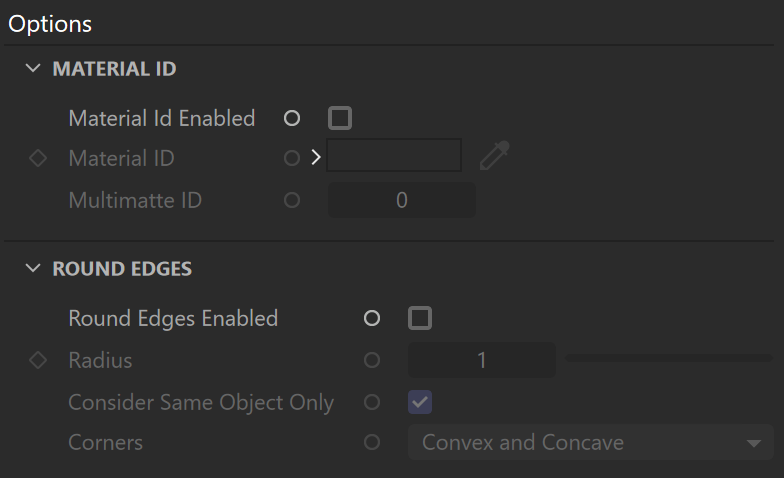This page provides information about the Two Sided Material node in V-Ray for Cinema 4D.
Overview
The Two Sided Material node is an output or Colored node. All other shading nodes can be inputs to this node. The Two Sided Material allows two surface nodes to be set as inputs, whereas the Material allows only one surface node.
Keep in mind that the Two Sided Node Material is shown in the UI as 2Sided Node Material.
If you wish to disable the material preview or adjust its quality to save processing power, you can do so from the Material Node.
Parameters
Back – The material V-Ray uses for back side faces, as defined by their normals.
Front – The material which is used for front-side faces, as defined by the object normals.
Translucency – Determines which side (front or back) relative to the camera is more visible in the rendering process. By default this value is 0.5, which means that both the side facing the camera, and the one facing away from it, are visible to the same degree. When this parameter is closer to 0.0, more of the material facing the camera is seen. When it is closer to 1.0, more of the back material is seen.
Force Single-sided Sub-materials – When enabled (the default), the sub-materials render as one-sided materials. Turning this option off is not recommended.
Multiply by Front Diffuse – When enabled, the Translucency is multiplied by the diffuse of the Front material.
Options
Material ID – The color used by the Material ID render element. You can also use a shader here.
Multimatte ID – The integer ID of the material to be used by the Multi Matte render element.
Round Edges Enabled – Enables the Round Edges effect, which uses bump mapping to smooth out the edges of the geometry during render time.
Radius – Specify a radius (in world units) for the Round Edges effect. Since the actual geometry is not being changed and only the normals of the faces are affected, large values may produce undesirable effects.
Consider Same Object Only – When enabled, the rounded corners are produced only along edges that belong to the object, which has the attribute applied. When disabled, rounded corners are also produced along edges formed when the object with the attribute intersects other objects in the scene.
Corners – Choose which edges are considered in the calculation. Possible options are:
Covex and Concave – Considers all edges.
Convex Only – Only applies Round Edges effect to edges with convex angles.
Concave Only – Only applies Round Edges effect to edges with concave angles.




